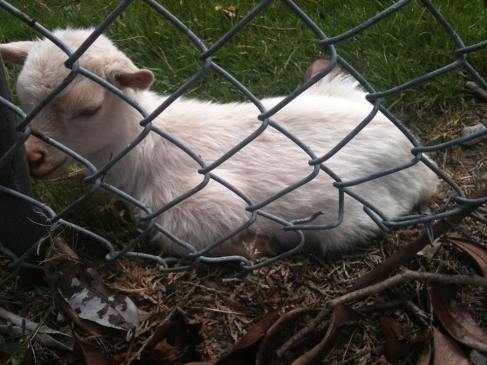OK, so goats.
I love goats. Not just itty kiddies, but grown ones too. Not sure why, they’re not usually terribly cuddly. Although if you scritch that spot on their backs, right between the hind legs they just go weak in the knees and it’s adorable.
Anyway, in high school I volunteered at the local zoo’s (Woodland Park Zoo) “Family Farm” which featured goats and other farm animals that are part of the summer petting zoo. Besides tidying their stables, etc., we were responsible for keeping the goats and sheep social in the winter so that when summer came they did not flip any shits over small children trying to pet them. Or at least in one goat’s case, make sure he continued to ignore/avoid everything (he was not actually in contact area at all, but we continued to dream).
So we got used to the goaty quirks, like chewing on our hair and coats. You would also notice them stand still, not moving then suddenly belch softly and start chewing, mouth abruptly full. If you think they just regurgitated something to continue chewing on it…you are exactly right. Goats are herbivores, and considering the low nutritional value of plants, and the high difficulty in digesting large quantities of plant fibers, they possess a stomach with four compartments with which they tackle their dinners. The biggest contribution to digestion in goats comes from bacteria. Bacteria actually aid in fermentation of ingesta (ingested food/miscelani). Though periodically the goats need to regurgitate things that require more chewing.
That’s just a little introduction, but I will continue tomorrow.
Source
Sherwood, Lauralee, Hillar Klandorf and Paul Yancey. 2005. Animal Physiology: From Genes to Organisms. Thomson Brookes/Cole, Belmont, CA.
Photo credit, me.
